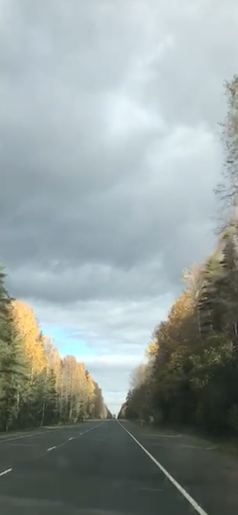In The Aleph Borges distinguishes two types of labyrinth: (1) the palace with its madly intertwining corridors and (2) the desert with its not-less disquieting, confusing boundless-ness. But he makes such distinction only to add a third and even-more-perplexing type: (3) the endless book whose first page is mysteriously renewed each time the book itself is opened. Three labyrinths, then; that is, three reflections (or enactments) of the infinite.
Now, by virtue of a fascinating and unparalleled modal twist, some Lithuanian, Latvian, and Russian roads which we have had the privilege to take over the past few days while travelling by car from southern Europe to northern Russia – happen to superimpose these otherwise-distinct labyrinth types: they trace lines (like in 1) which, nonetheless, prove to be boundless (like in 2), while their point of departure recommences in turn once and again (like in 3). For they are, more often than not, endless straight lines, or better (see below), a single endless straight line that resembles (enacts) the infinite. And yet, due to the disconcerting identity of the segments of each road, each, say, 1 or 2 kilometres, the same place one has just passed by (with, for instance, the same reduction of the speed limit at 70 kilometres per hour, a similar crossroad, an identical group same houses, the same trees, etc.)… reappears again and again.
A mixed feeling of dizziness and excitement invaded us. We were only two hundred and seventy kilometres from St. Petersburg and we wondered how many times would that same place still appear again before our eyes.
In short, some Lithuanian, Latvian, and Russian roads shine forth as a particular type of déjà-vu, unique in that it is eternally recurrent.

The road from Pskov to St. Petersburg (a.k.a. E95). Photo by Polymorph
